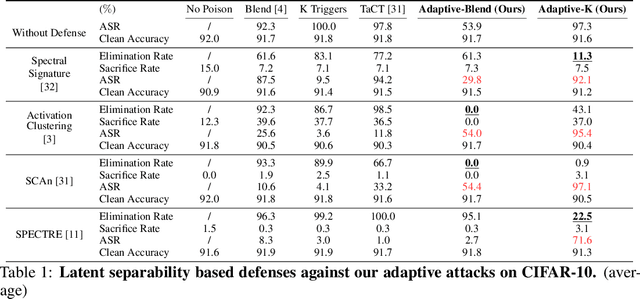Circumventing Backdoor Defenses That Are Based on Latent Separability
Paper and Code
May 26, 2022



Deep learning models are vulnerable to backdoor poisoning attacks. In particular, adversaries can embed hidden backdoors into a model by only modifying a very small portion of its training data. On the other hand, it has also been commonly observed that backdoor poisoning attacks tend to leave a tangible signature in the latent space of the backdoored model i.e. poison samples and clean samples form two separable clusters in the latent space. These observations give rise to the popularity of latent separability assumption, which states that the backdoored DNN models will learn separable latent representations for poison and clean populations. A number of popular defenses (e.g. Spectral Signature, Activation Clustering, SCAn, etc.) are exactly built upon this assumption. However, in this paper, we show that the latent separation can be significantly suppressed via designing adaptive backdoor poisoning attacks with more sophisticated poison strategies, which consequently render state-of-the-art defenses based on this assumption less effective (and often completely fail). More interestingly, we find that our adaptive attacks can even evade some other typical backdoor defenses that do not explicitly build on this separability assumption. Our results show that adaptive backdoor poisoning attacks that can breach the latent separability assumption should be seriously considered for evaluating existing and future defenses.
 Add to Chrome
Add to Chrome Add to Firefox
Add to Firefox Add to Edge
Add to Edge